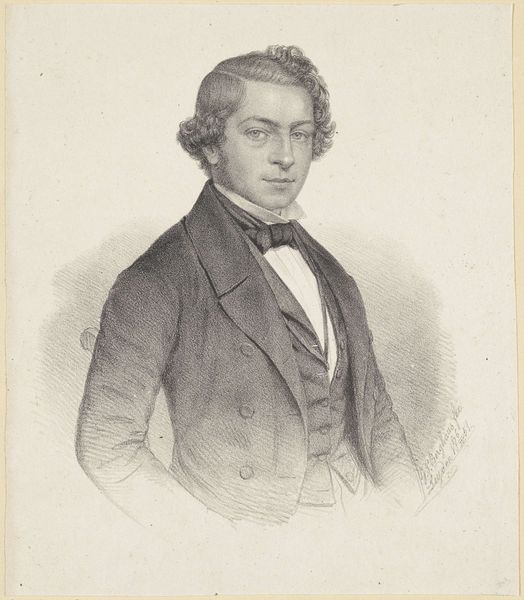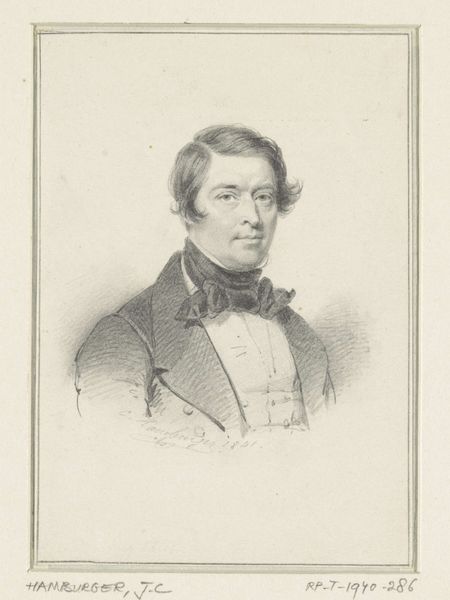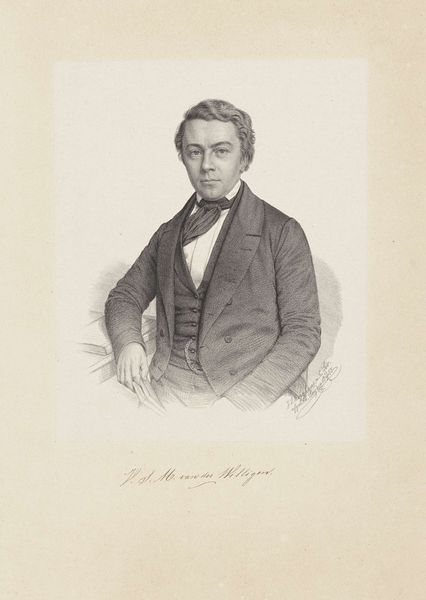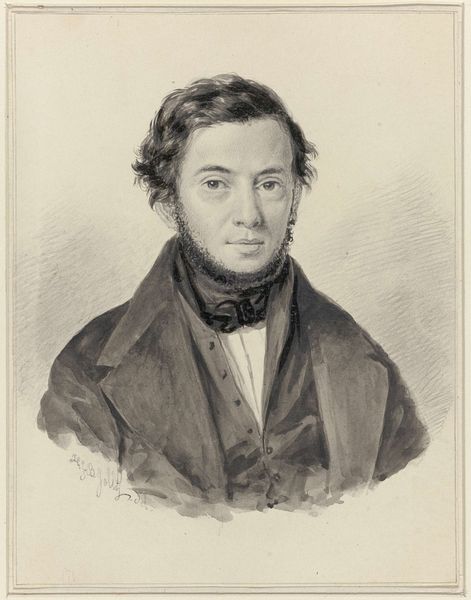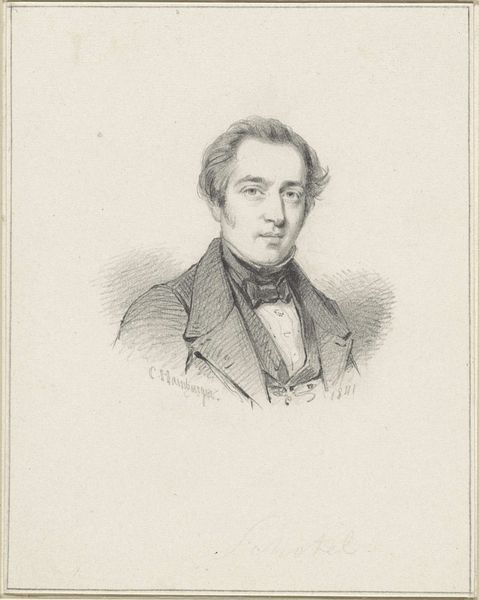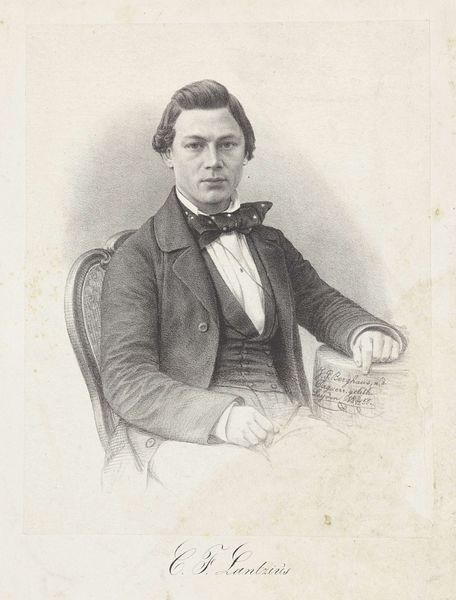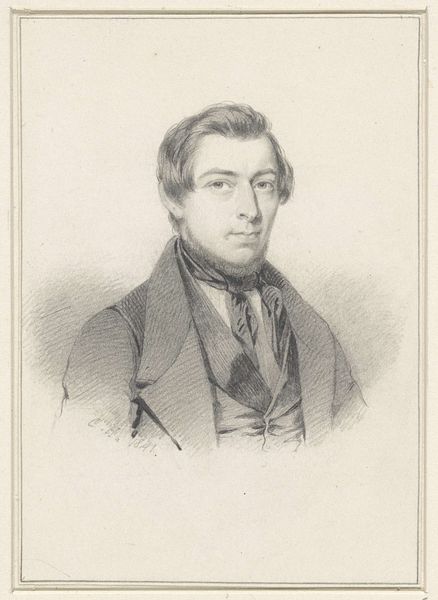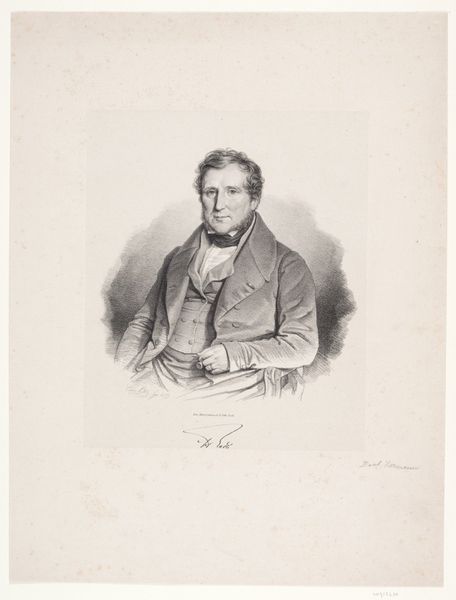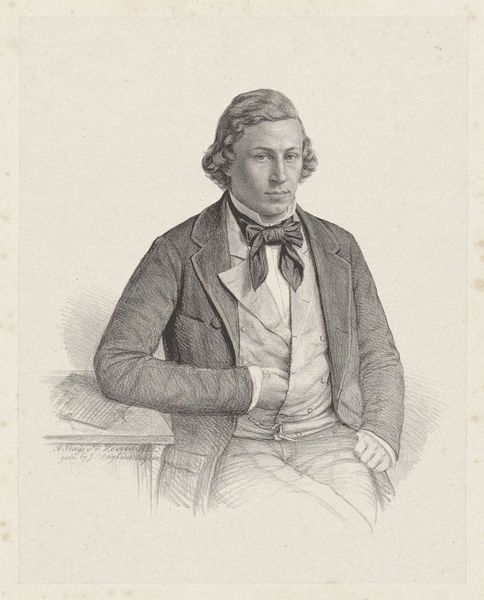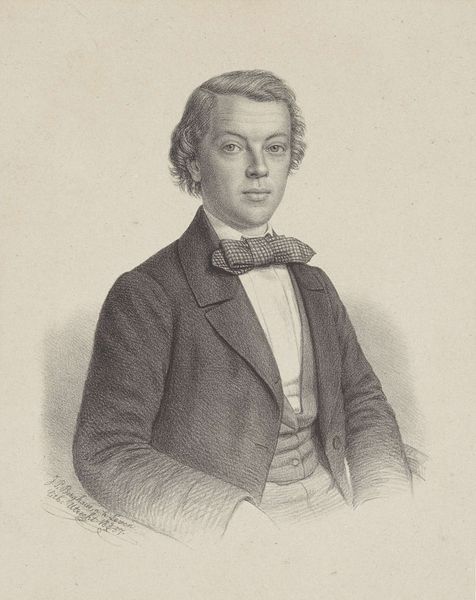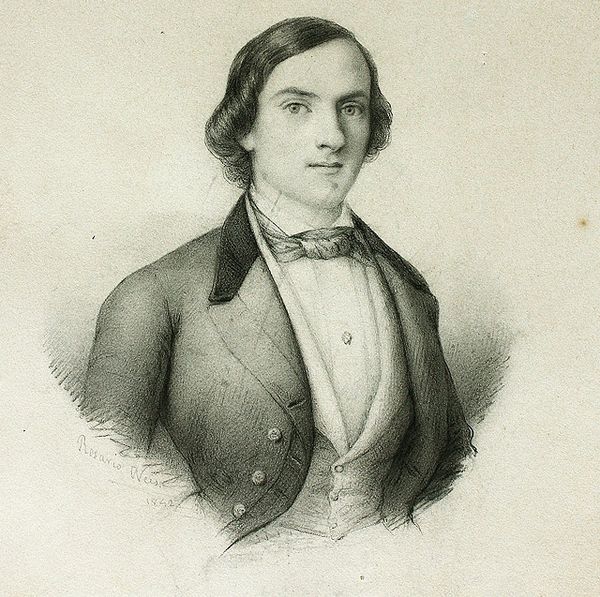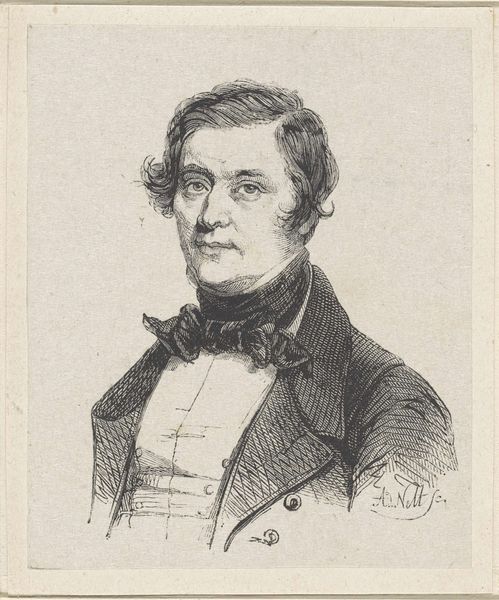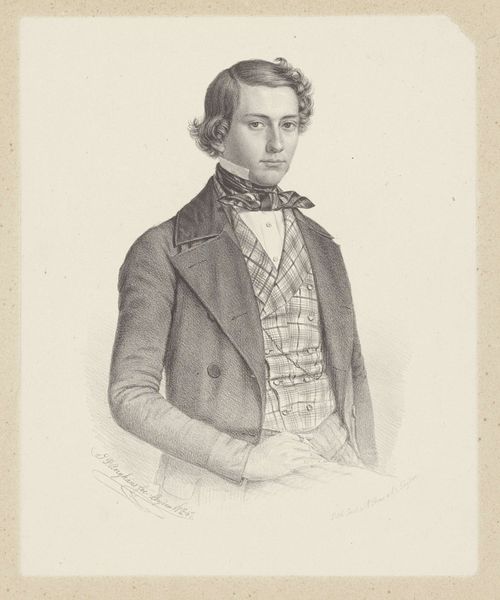
Portret van een man, mogelijk Petrus Abraham Samuel van Limburg Brouwer Possibly 1851 - 1857
0:00
0:00
drawing, pencil
#
portrait
#
drawing
#
book
#
charcoal drawing
#
pencil drawing
#
pencil
#
portrait drawing
#
academic-art
#
realism
Dimensions: height 196 mm, width 172 mm
Copyright: Rijks Museum: Open Domain
Curator: Here we have Johann Peter Berghaus's portrait of a man, thought to be Petrus Abraham Samuel van Limburg Brouwer. It's a drawing rendered in pencil, dating possibly from 1851 to 1857. What strikes you about it initially? Editor: The light! The way the pencil renders such deep shadows across the face and clothing. And the texture, especially in his hair, is fantastic. It really creates a captivating sense of presence. Curator: Indeed. Looking closer, we see Berghaus employing meticulous strokes and cross-hatching. The hatching is fascinating; consider the cultural value and social labor involved in producing these pencils at the time. How available would such a tool be? Who would be able to afford this mode of portraiture? Editor: I see your point about production, but consider how effectively Berghaus uses line weight to suggest form and volume. Notice how the darkest lines define the contours of the face, contrasting with the softer, almost blurred lines of his vest. This contributes significantly to the overall impression of depth and realism. Curator: Realism achieved with what at the time was likely a considerable expenditure in the drawing implements and time allotted to one person to produce such detailed and careful work. Even his fashionable clothes communicate this idea. One wonders, too, if the presence of the book he's holding points to literacy rates among particular demographics and its connection to power and the production of knowledge. Editor: A compelling angle. But I'm also drawn to the sitter's expression – a touch melancholic, perhaps a little reserved. It pulls me in and encourages speculation about the man’s inner life, regardless of his book or vest. I also see this as working with the academic traditions of portraiture in the 19th century and its interest in communicating specific ideas about its sitter. Curator: True, such portraits served as symbols of status and identity in that era, frequently intended for a bourgeois consumer, and here is how. Editor: I agree. It's all synthesized so brilliantly through visual decisions about light, shadow, and detail. It gives this portrait power and immediacy, regardless of social context or implications of consumerism. Curator: I concede. Looking again, you have reframed how I look at Berghaus' choices, especially the play of light and the depth it creates. Editor: And your discussion about production techniques adds layers to appreciate beyond mere formalism. It certainly gave me a new approach as well.
Comments
No comments
Be the first to comment and join the conversation on the ultimate creative platform.
